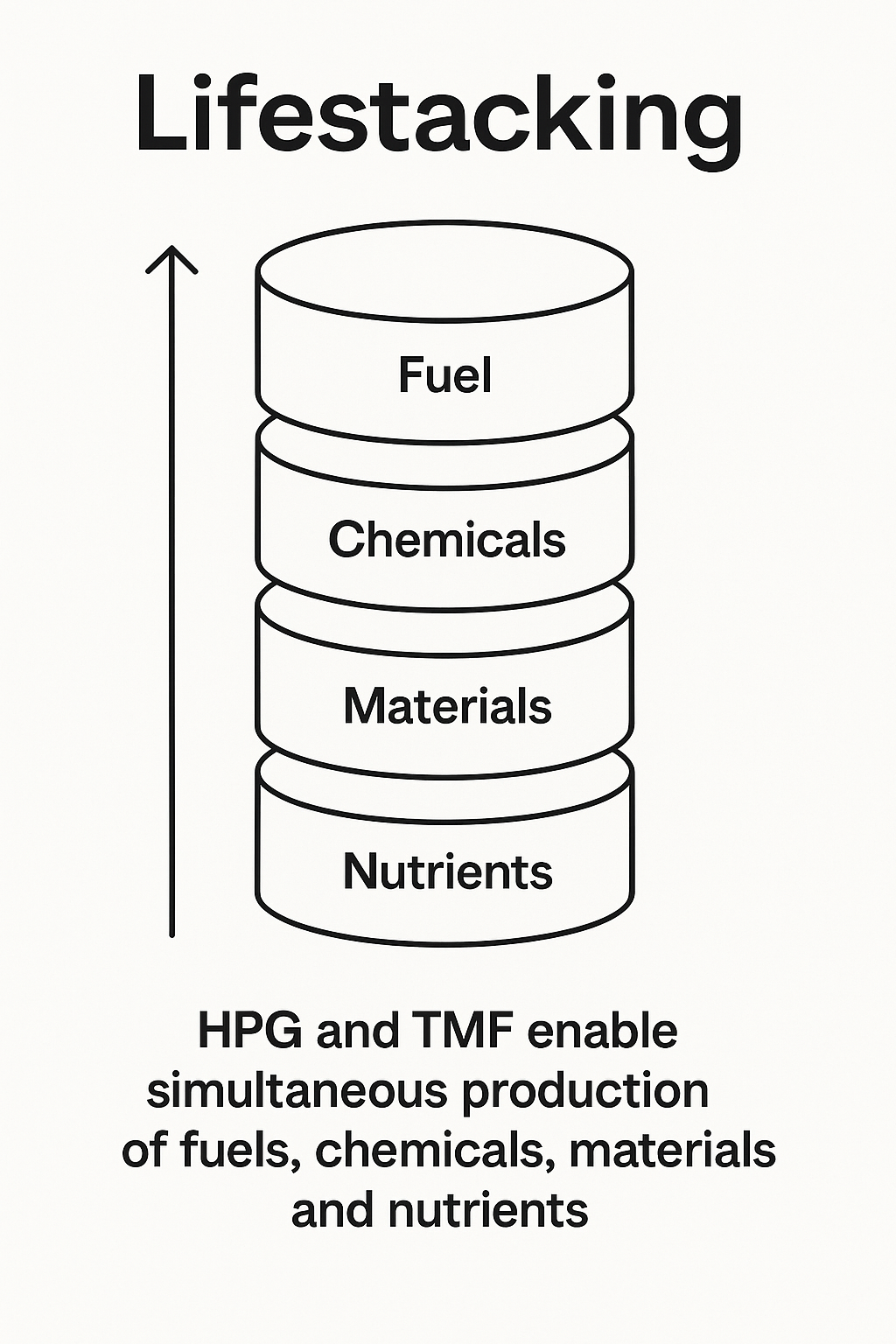
Warsaw, 12 May, 2024
Lifestacking: A Value Proposition for Carbon Sovereignty
In the post-carbon era, success will not be defined by how much we extract from the Earth, but by how intelligently we reuse what we already have. That’s the principle behind “Lifestacking”, a new industrial model enabled by the integration of Hydrogen Producer Gas (HPG) and Targeted Microbial Fermentation (TMF). Developed and deployed by the Syngas Project, this approach doesn’t just recycle energy or materials; it recycles carbon, intelligently and endlessly.
The Problem with Linear Carbon Use
In traditional energy and industrial systems, carbon is a one-way ticket: extracted, combusted, emitted. Even so-called “green” solutions often fail to close the loop. They burn biomass and call it renewable, or capture CO2 only to inject it underground, removing it from the cycle entirely. These models fail to recognise the value of carbon as a feedstock, especially in a world where biology is ready to do the work.
How Lifestacking Works
Lifestacking is a process stack, a layered system where every step adds value, compounds efficiency, and deepens impact. The synergy between HPG and TMF unlocks a cascading value chain that transforms waste carbon into Fuel, Chemicals, Materials, and Nutrients (FCMN). But unlike traditional processes, nothing is burned or discarded. Instead, carbon is passed along, reprocessed, and transformed.

